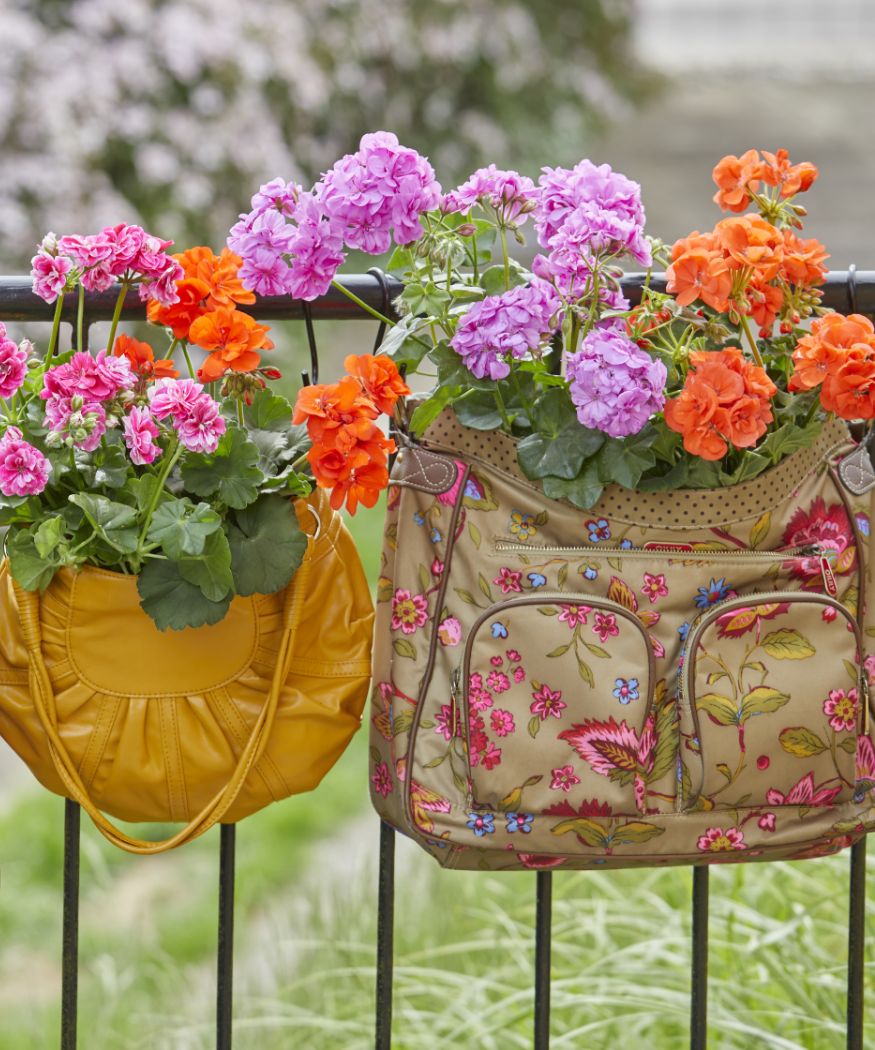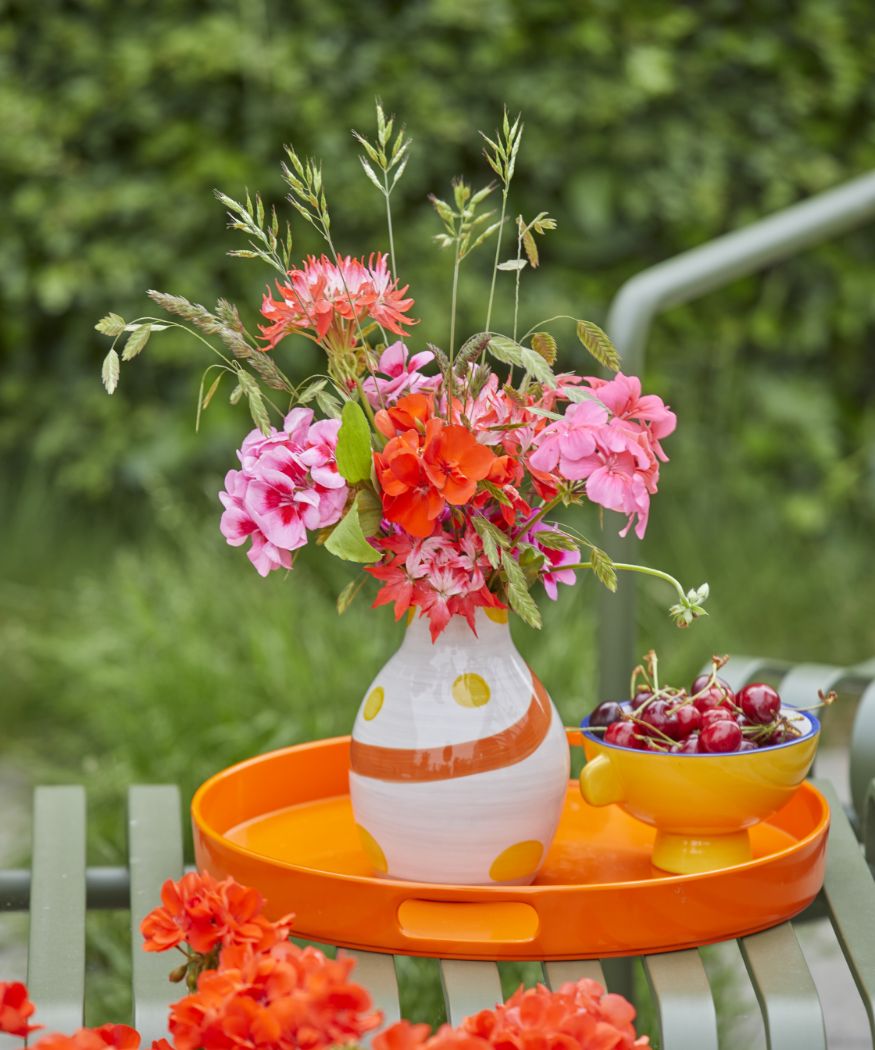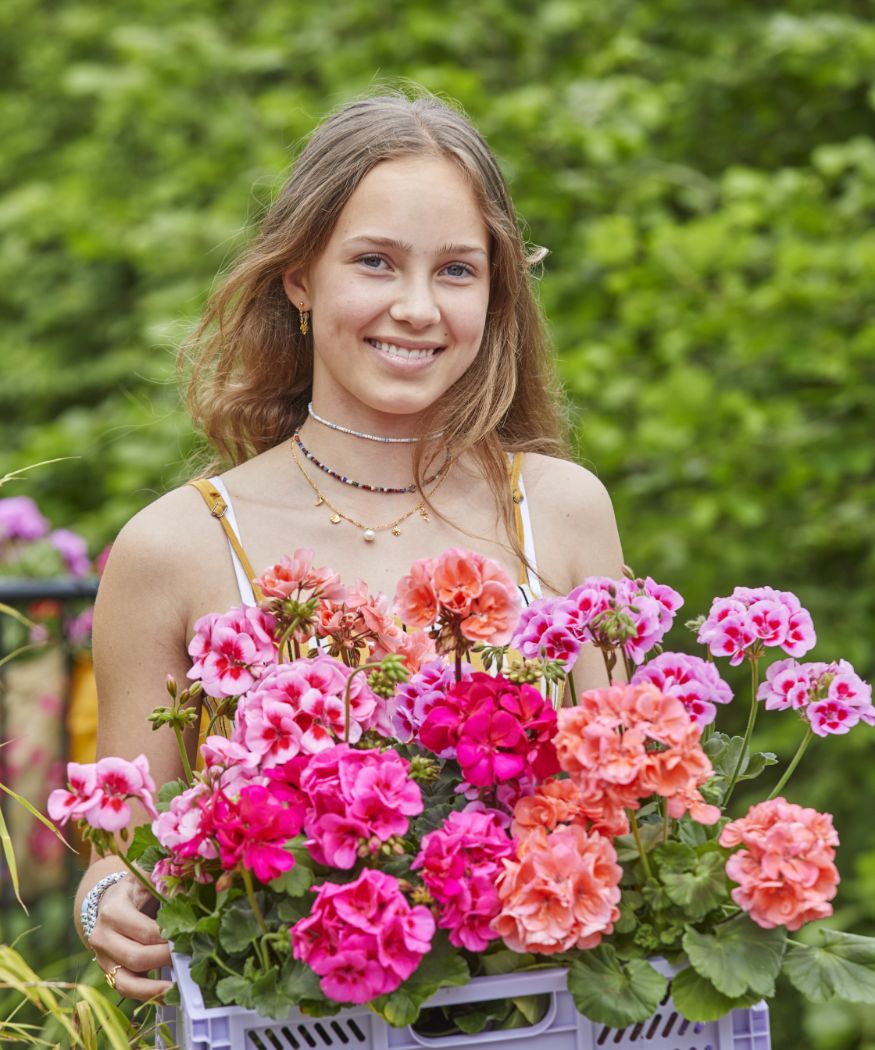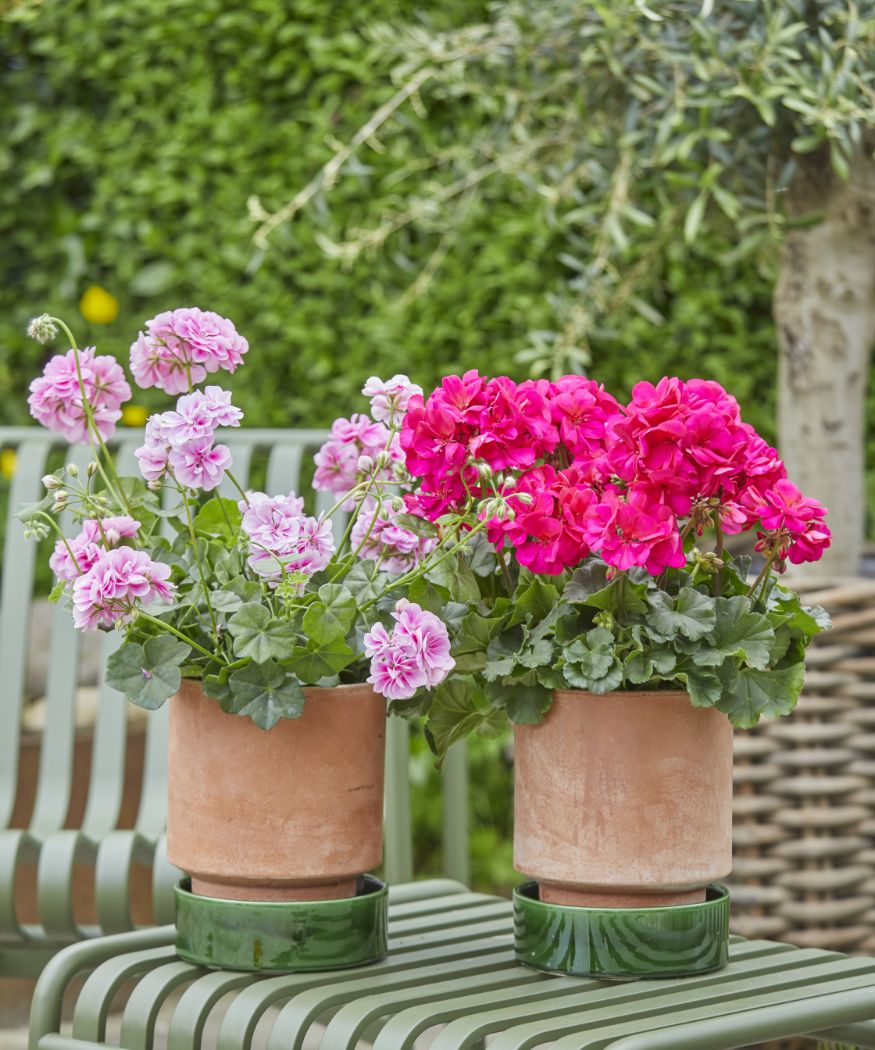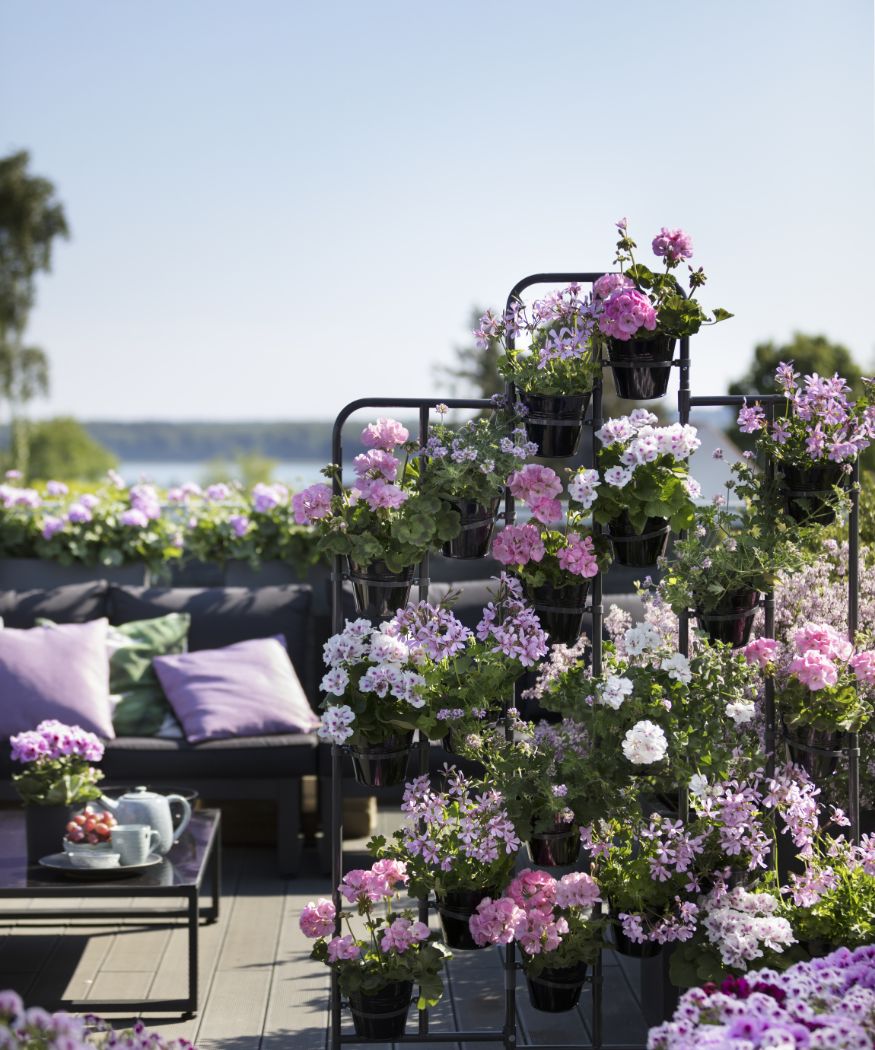“Show the features of the plant in the photo,” says Anna Marie. “If it’s scented, take a picture of a nose or face smelling it. If it’s edible, show it on a plate or as part of a meal.”
Edible flowers are on-trend right now. If you stock organically grown scented geraniums, available in flavours such as lemon, rose, and peppermint, why not create great lifestyle shots of their flowers sprinkled on enticing desserts, or in cool glasses of lemonade? Always check packaging to make sure plants are safe to eat before promoting this.
Showing the range of plants you stock is important too and simple to do, says Anna Marie. “If you’ve bought the same plant in different colours, put one of each shade close together and take a shot of just the flower heads. This tells you about the many colour variants.”
Pelargoniums are perfect for this type of photography; they range from deep reds, through purples, lilacs, oranges, salmon, coral and pinks, up to purest white. Their shapes are just as varied too, with the classic upright look of regal and zonal varieties, as well as trailing ivy geraniums and the delicate foliage of scented and hardy types.
Your stories can ‘sell’ your business too. Plants fresh in-store make a great example. “Take photos of a plant being carried into the shop by smiling staff,” says Anna Marie. “Remember, it’s always best to do photography as soon new plants arrive in-store when they’re fresh. The sooner you tell people about them, the sooner they’re sold.”
Detail shots of interesting plants also make strong images. “Make sure there’s a close-up image of a special flower or leaf,” says Anna Marie. “Having it held gently by a hand makes sure you can get the perfect angle.”
Geranium flowers are ideal for this as their blooms range from tiny, delicate varieties, to the bold heads of zonal geraniums. Their leaves are worthy of your lens too with dramatic rings of colour, pretty ruffles or dynamic palmate shapes.
